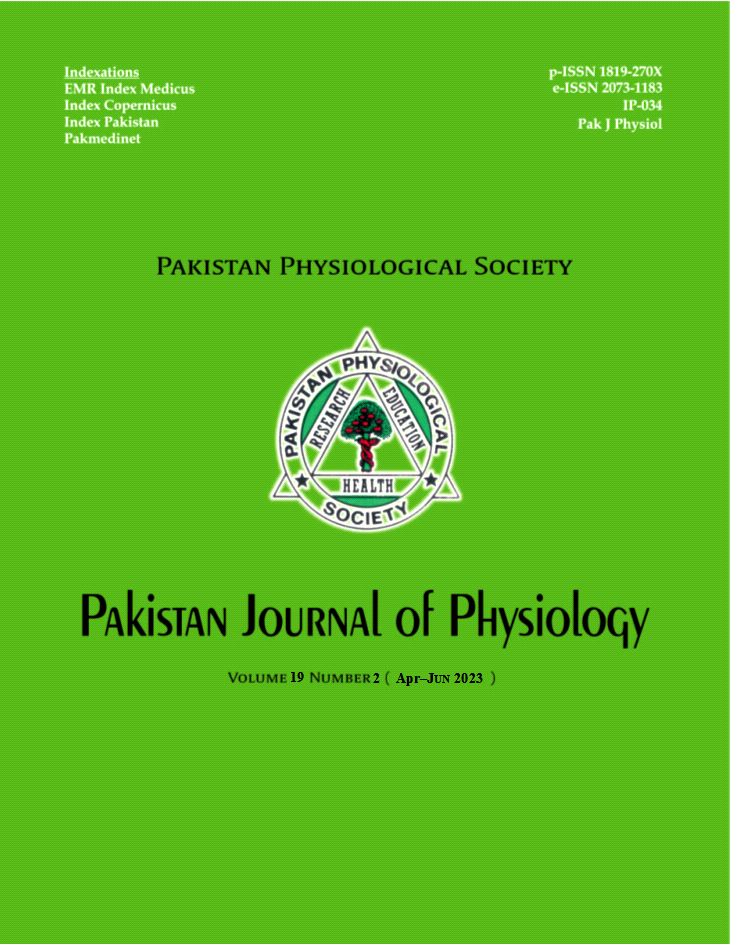ANTIOXIDANT EFFECT OF GHRELIN ON NICOTINE-INDUCED RENAL TISSUE DAMAGE IN MICE
DOI:
https://doi.org/10.69656/pjp.v19i2.1510Keywords:
Ghrelin, Antioxidants,, lipid peroxidation,, oxidative stressAbstract
Background: Ghrelin is an orexiogenic peptide released from stomach. It protects multiple organs of the body by its antioxidant and anti-inflammatory properties. Ghrelin combats oxidative stress by increasing antioxidant enzymes and decreasing lipid peroxidation. This study was done to determine the nephroprotective effect of ghrelin against nicotine induced renal tissue damage in BALB/c mice by estimating tissue antioxidant enzyme levels, namely catalase (CAT), superoxide dismutase (SOD), glutathione reductase (GR) and lipid peroxidation marker malondialdehyde (MDA). Methods: This randomized control trial was conducted at Foundation University School of Health Sciences, Islamabad in collaboration with National Institute of Health, Islamabad. Total of 27 male mice from NIH were randomly allocated into 3 groups. Group I (control) received 1 ml/Kg body weight saline, Group II (nicotine only) received 2.5 mg/Kg of body weight nicotine daily and Group III (nicotine plus ghrelin) received nicotine 2.5 mg/Kg body weight each day along with ghrelin 10 ?g/Kg on alternate days for 29 days via intraperitoneal administration. Renal tissue sampling was done on 30th day for estimation of tissue oxidative stress markers through ELISA. Results: Nicotine administration led to significantly increased levels of CAT (p<0.001), SOD (p<0.001), GR (p<0.001), and decreased MDA (p<0.001) levels in group II. Administration of ghrelin along with nicotine in Group III resulted in significant restoration (p<0.001) of antioxidant enzymes (CAT, SOD, GR) and lipid peroxidation (MDA) (p<0.001) levels. Conclusion: Ghrelin acted as a potent antioxidant in nicotine induced oxidative stress in renal tissue suggesting its potential nephroprotective role.
Pak J Physiol 2023;19(2):3–5
Downloads
Downloads
Published
How to Cite
Issue
Section
License
The author(s) retain the copyrights and allow their publication in Pakistan Journal of Physiology, Pak J Physiol, PJP to be FREE for research and academic purposes. It can be downloaded and stored, printed, presented, projected, cited and quoted with full reference of, and acknowledgement to the author(s) and the PJP. The contents are published with an international CC-BY-ND-4.0 License.











